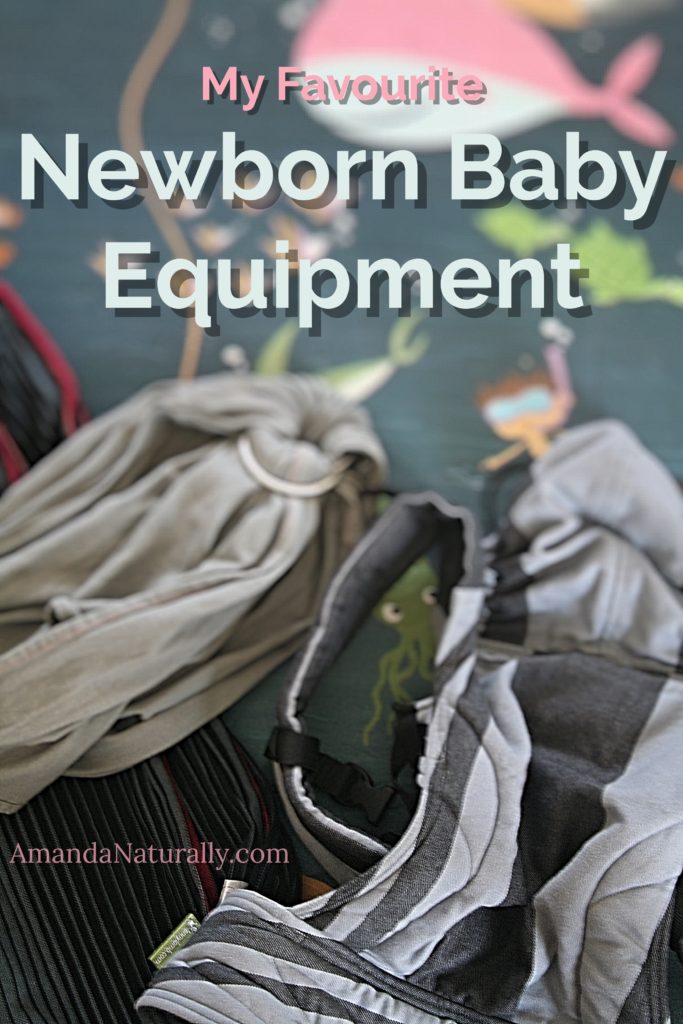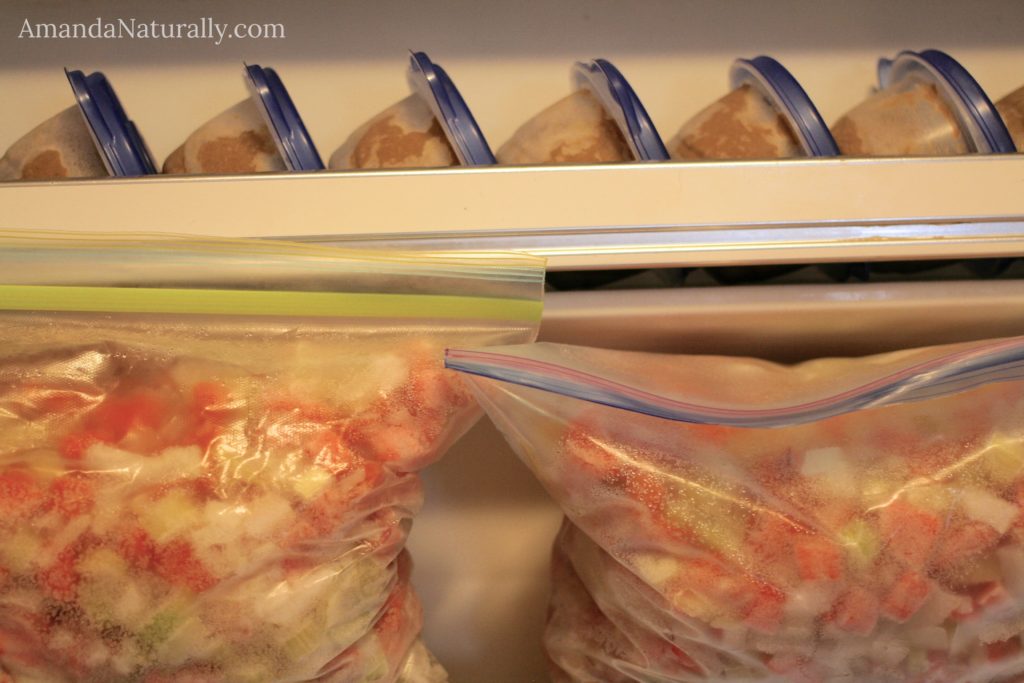Favourite Equipment = No Equipment
 Before my baby shower, a lot of people were surprised that I didn’t register for some typical baby items like a Bumbo, an Exersaucer, a Jolly Jumper, Swings, Activity Mats etc. So I thought I would share a few resources as to why we didn’t.
Before my baby shower, a lot of people were surprised that I didn’t register for some typical baby items like a Bumbo, an Exersaucer, a Jolly Jumper, Swings, Activity Mats etc. So I thought I would share a few resources as to why we didn’t.
But before I do, please note, there is no judgement coming at you from this post, it’s simply a window into our approach regarding our baby’s physical development. Every parent is just trying to do their best!
Since we’re very health-conscious, but musculoskeletal development is not our speciality, we sought out information from trusted sources like our functional chiropractors. As such, our overarching philosophy towards physical development with our baby boiled down to this:
Do not place the baby in a position she is not developmentally ready for. Once she has mastered the skill on her own, we can use equipment occasionally, but not before.
Rationale
Let’s take the hugely popular, Bumbo as an example. The whole ideal behind the Bumbo is to help babies sit upright, who cannot yet sit up on their own. Good in theory. Not so great in practice. Babies typically sit up on their own in the 6-9 month window. By placing them in seats like the Bumbo (or other chairs), not only do you slow down their progress (the wobbling is key for developing stabilizing muscles); it creates an environment for developmental imbalances, by forcing the pelvis into a posterior tilt, shortening muscles, weakening others; and becomes risky as some kids fight to get out of the unnatural position. More info here.
The same can be said for the Exersaucer or Jolly Jumper, which artificially places babies in a standing position, before their joints (hips, spine) and muscles are developmentally ready to handle those loads. It is also the reason why Not To Help A Baby Walk Before They’re Ready.
For more information from specialists in this area, check out Grazed & Enthused’s article on The Risks of Baby Equipment (she’s a paediatric OT) and CanDo Kiddo’s article on How To Know If Your Kid Is Ready For A Chair (another paed OT).
What I Did Instead – Tummy Time & BabyWearing
If you want your kid to develop the muscles for sitting, crawling, rolling etc. they need to use them! And they need to use them in a way that follows the natural developmental progression. This starts with moving their eyes around, then turning their heads, then trying to lift their heads… all of which happens during Tummy Time.
Now, Tummy Time does not mean you take an infant who has been on their back or in your arms their entire life, and throw them face down on the floor. That’s totally not fair, and it makes sense that they hate it. It’s scary because they don’t have the muscles to even lift their heads up. Instead, you can start Tummy Time from the day they are born, by having them lie on their tummies, on your chest on an incline. Our 2 day old baby girl could lift her head up in this position, so by the time she was a few weeks old, Tummy Time was a breeze. Katy Bowman discusses the math and physiology behind Tummy Time here.
From about 6-8 weeks onward (after she “woke up”), anytime she wasn’t nursing, sleeping or being carried in our arms, we had her on the floor. I swear because of that (combined with her personality), she was rolling across the room with intention by 4 months, sitting on her own at 5 months and crawling like a maniac by 6 months. She’s almost 7 months at the time I’m writing this and she pulls herself up to standing easily, and is currently practicing letting go and clearly trying to figure out how to make her feet move in that position. Granted, this is also part of her personality (I ran at 9 months), but I truly believe that we provided the environment for her to develop at her desired speed, by not providing her with anything!!
Now, in order to get things done (groceries needed to be bought, food cooked, dog walked, fresh air experienced), I also wore her a lot. Not all day, every day, because I knew that wouldn’t be good for my body, but I definitely had her in a baby carrier at least an hour every day, sometimes for a few hours on high-needs days (or for naps during her refluxy period). This had a hugely positive impact both on my psyche (2 hands free! Sun!) and her development as her muscles continued to be challenged in a positive way that facilitated development. By 2-3 months the 2 compliments we kept on receiving about our baby girl was (1) how alert she was – she was able to be alert because she could see everything by being on me, and (2) how strong she was – baby wearing for the win!
It Takes A Village…
Humans developed in small villages, where everyone helped raise the children. This whole concept of a mom being at home, by herself, all day every day to take care of her child(ren) is fairly absurd, anthropologically speaking. So that’s where equipment comes in. Baby equipment is a babysitter, and when used like that, it can be really helpful and keep babies safe. I had a few things that I used occasionally, to allow me to go to the bathroom or prep dinner when baby wearing wasn’t an option. Here are my favourites:
- Baby Bouncer. This mostly reclined bouncer stayed in the kitchen, and was only used during meal prep. We removed the toy-bar to reduce stimulation (and let her decide where to look) and didn’t bother to turn on the vibration. It kept her off the hard floor, but almost on her back, while we prepared food. We could interact with her, but also get dinner made!
- Floor Mat. In order for floor time, you need something cushy! We also did a ton of naked time, so protecting the floor was also key. The Prince Lionheart PlayMat is my favourite! We originally had a foam puzzle piece mat, but she quickly learned to pull the pieces up and I didn’t love her chewing on foam… enter this mat which is useful from Tummy Time all the way to Toddler Hood. I love that it’s non-toxic too!
 Newborn Wrap (6-10 weeks). I had a MonkeyWrap, which my girlfriend no longer needed, but a similar stretchy wraps is the Boba Baby Wrap. The stretchy wrap allows you to fit both your body (and your partner’s!) as well as the baby’s (regardless of what they’re wearing), so it’s a perfect, and comfortable fit every time. The only downside is you need to learn how to wrap, but once you do, you quickly become a pro. My friend taught me only a few days after baby girl arrived, and it totally changed my life. I had so much more freedom already! I would wrap it on me before I left the house, and pop her out of the carseat and into the wrap to do errands. Bonus is it kept strangers hands off my newborn baby! I also used this to walk the dog starting 3 weeks PP. My husband loved this – it was his “boobs” when I needed a shower and the kiddo really needed me! Haha!
Newborn Wrap (6-10 weeks). I had a MonkeyWrap, which my girlfriend no longer needed, but a similar stretchy wraps is the Boba Baby Wrap. The stretchy wrap allows you to fit both your body (and your partner’s!) as well as the baby’s (regardless of what they’re wearing), so it’s a perfect, and comfortable fit every time. The only downside is you need to learn how to wrap, but once you do, you quickly become a pro. My friend taught me only a few days after baby girl arrived, and it totally changed my life. I had so much more freedom already! I would wrap it on me before I left the house, and pop her out of the carseat and into the wrap to do errands. Bonus is it kept strangers hands off my newborn baby! I also used this to walk the dog starting 3 weeks PP. My husband loved this – it was his “boobs” when I needed a shower and the kiddo really needed me! Haha! - Soft-Structured Carrier (starting at 4-6 months). There are SO many options – with the Ergo being the most common – but a quick look through a baby wearing Facebook group and you’ll see there are lots of great carriers. I have a LennyLamb which I LOVE. Other popular carriers are the Tula, LilleBaby, Baby K’Tan, Mei Tai, Chimperoo… Lil Monkey Cheeks is my favourite (local) place for information about and purchasing carriers! NOTE: babies should only be worn facing you, with their knees above their hips. Facing out creates undesired pressures on their hips and pelvis, which can potentially lead to developmental issues.
- Woven/Ring Sling. Since I was really into wearing her when I needed to get stuff down around the house, instead of placing her in an exersaucer, I had several wraps. I invested in a Woven and a Ring Sling for the period in between the newborn phase and when she was big enough for the soft-structured carrier. A woven is a little more complicated, because it’s just a long piece of fabric and you need to learn how to wrap the baby in it, but I had practiced with my MonkeyWrap so I loved my woven. The Ring Sling was my husbands favourite becase it was simple to use. I used the woven for longer periods of wearing her, like walking the dog, and the ring sling for lots of in-and-out, like errands or around the house. I got mine from Lil Monkey Cheeks. I exclusively use our soft-structured carrier now, but I can imagine using the woven again when she gets large enough for back carries!
So mamas, what things could you not live without during those newborn months??




